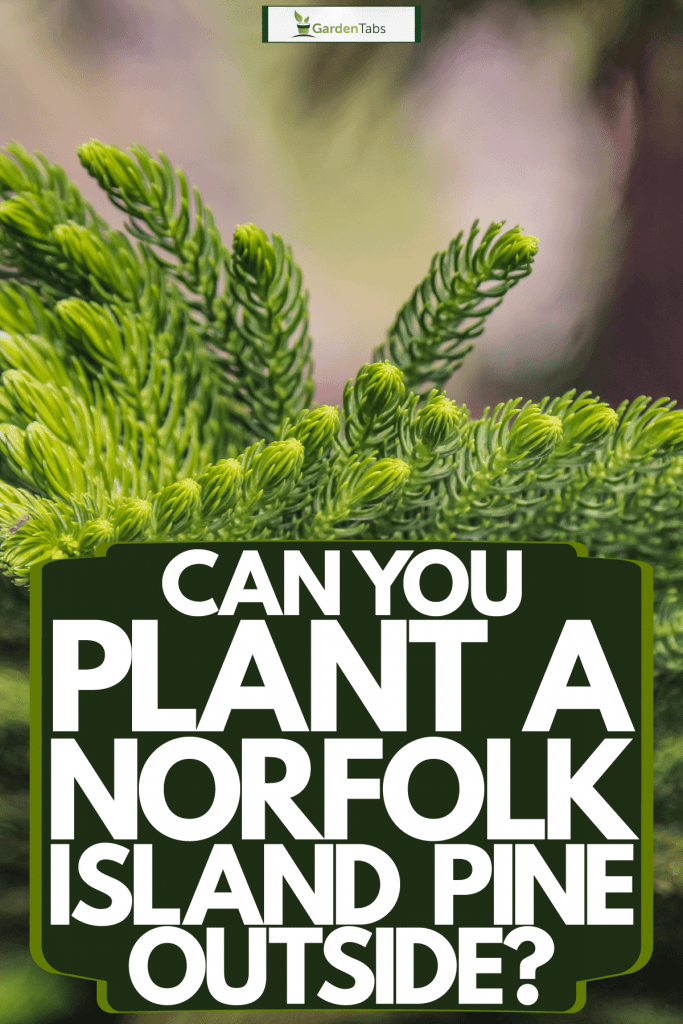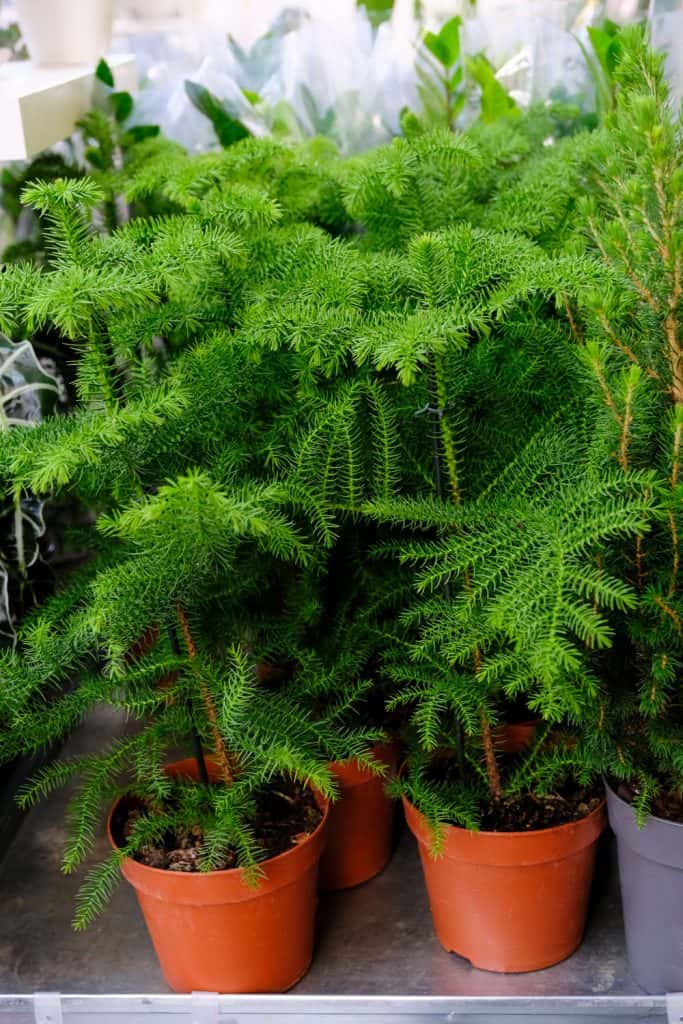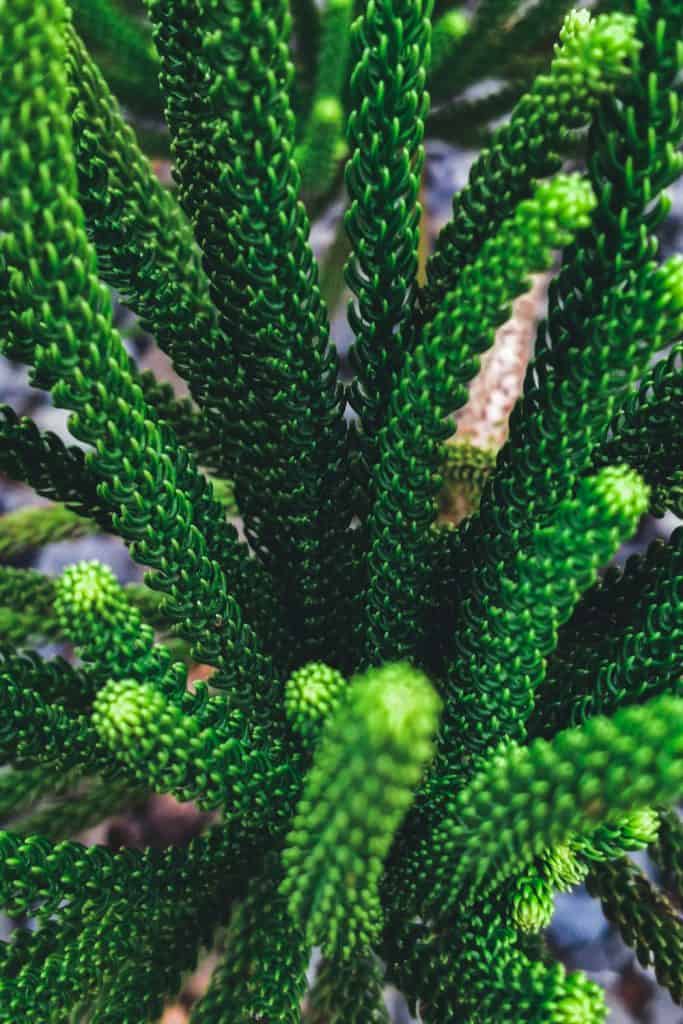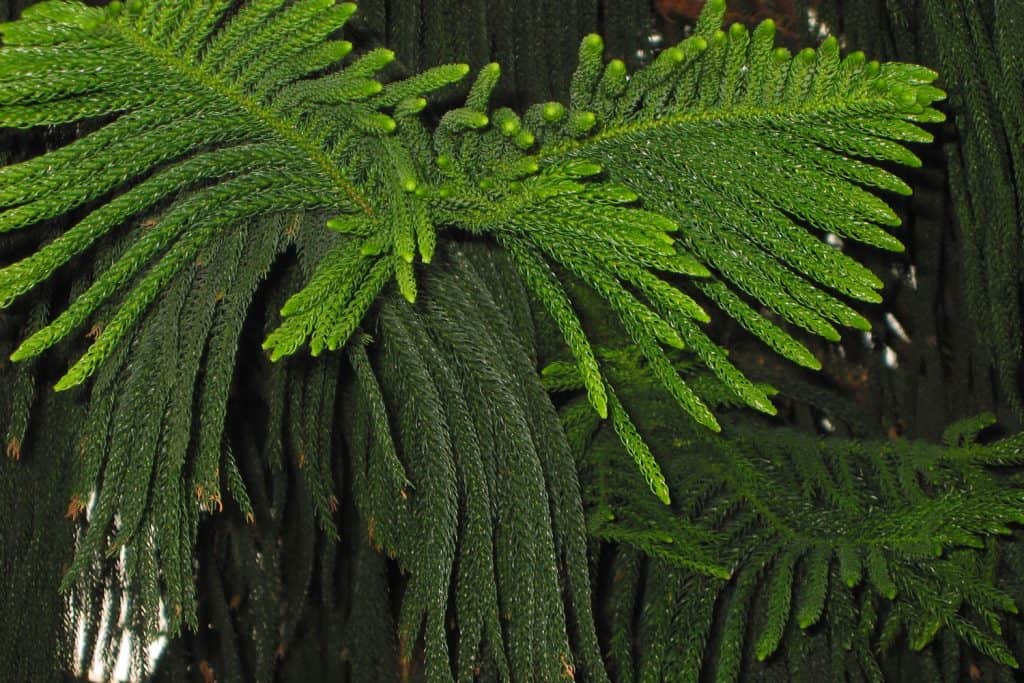Figuring out the planting needs of trees can prove daunting. Do you have a Norfolk Island pine that you want to plant outside but don't know if it can survive the different seasons? We are also curious about this and have done our research to find you the answer.
You can plant a Norfolk Island pine outdoors as long as you live somewhere with moderate winters. Generally, this tree species prefers warmer, milder weather and likes its soil acidic with plenty of drainage. That said, if you live somewhere with freezing weather, we recommend keeping your tree inside through the late fall and winter seasons.
As we begin, we will cover all things Norfolk Island pine and explain how to grow them outdoors. Whether you want to replant your current pine or want to purchase your first tree, we've got you covered. With that said, let's jump right into this topic!

Where Is The Best Place To Grow A Norfolk Island Pine?
Due to Norfolk Island pine being native to the South Pacific, they do best in semi-tropical environments. Temperature-wise, these trees prefer moderate weather ranging from 65 to 80 degrees Fahrenheit and are not suited for temperatures under 35 degrees.

When it comes to good places in the US to grow Norfolk pine outside, they do exceptionally well in southern Florida and the Hawaiian islands. That said, Norfolk pines can grow in USDA zones ten through 11, so as long as you live within those zones, your tree will be fine outside.
How Do You Care For A Norfolk Pine Outside?
In general, caring for a Norfolk pine is pretty easy if you plant them in a good spot. You should plant your pine in an open, bright area, but not in the full sun.
Your tree shouldn't need much attention besides regular watering and the occasional pruning, so this is a great option for those with a busy schedule.
What Soil Is Best For Norfolk Pines?
Like we covered, Norfolk pines like soil with acidity, sand, and plenty of drainage. Specifically, this tree species prefers sandy, peaty soil with a pH of 4.5 to 5.5.
Norfolk pines, in particular, have slow-growing roots, so it is also important that their soil is somewhat thick to support them until they become established. We also found that these trees do well in soil with phosphorous because it encourages root development.
Miracle-Gro Tree & Shub Garden Soil
This planting soil helps build strong roots, is rich in phosphorus and iron, prevents over/under watering, and covers 1.5 cubic feet.
Follow this link to see it on Amazon here.
How Much Water Does A Norfolk Island Pine Need?
Generally, you only need to water an established Norfolk Island pine every one to two weeks. Depending on how warm it is outside, watering might need to be more frequent, so feel around the base of your tree every few days.
For anyone with a younger Norfolk pine, try watering it once per week, keeping its soil damp at all times. That said, regardless of your tree's age, try not to water it to the point its soil is constantly soggy because this can cause its roots to rot.
Soil Moisture Meter
This moisture meter is indoor/outdoor safe, provides instant results, has a seven-inch probe, and comes in two sizes.
Check out this soil meter on Amazon here.
How Much Sun Does A Norfolk Pine Need?

Typically, Norfolk pines prefer between four and eight hours of direct sun but don't require that much to grow. Although native to tropical climates, these trees prefer indirect sunlight but can handle full exposure as long as it isn't too hot out.
With that said, if your tree doesn't get enough sunlight, it can become leggy and less full, so make sure to plant it somewhere with partial sun.
Will Norfolk Pine Grow In Shade?
For those with shadier gardens, yes, Norfolk Island pines can grow in the shade. As mentioned above, if your tree doesn't get at least a few hours of direct sun per day, it can become less healthy, but that won't necessarily kill it.
Especially if you are transitioning your indoor pine to the outdoors, it is essential to plant it somewhere with at least a few hours of direct sun per day.
How Fast Do Norfolk Island Pines Grow?
When it comes to growth, Norfolk pines are considered to be slow-growing trees. According to the University of Florida, Norfolk Island pines can take up to a decade to reach five to eight feet in a pot, so this will be a long process.
If your tree is in-ground, you can expect it to reach around ten to 15 feet within its first decade, which is still pretty slow. That said, there are cases of Norfolk Island pines growing two feet per year, so your tree might surprise you.
How Long Do Norfolk Pines Live?
Generally, you can expect a Norfolk pine to live anywhere from 100 to over 200 years. Although every tree is different, Norfolk Island pines are well-known for their long lifespans and charming characteristics.
There are even Norfolk pines as old as 300 years in ideal conditions, so this is a great long-living tree option.
Norfolk Island Pine
This live Norfolk Island pine comes 36 to 38 inches tall, will be in a three-gallon container, and ships out within five to seven days.
Check out this tree on Amazon here.
Do Norfolk Pines Have Deep Roots?

Norfolk pines do have relatively shallow root systems. Even as adults, these trees are prone to falling over during heavy winds and usually won't develop strong root systems until later in life.
Overwatering a Norfolk pine can contribute to weaker roots, so make sure to feel your tree's soil each time before you water it.
How Big Do Norfolk Island Pines Get?
Typically, you can expect an outdoor Norfolk Island pine to reach about 100 feet tall and close to 60 feet wide. Although Norfolk pines are slow growers, they can reach massive sizes and are great barrier trees to plant around your property.
Of course, this depends on how well you take care of your tree and if it is in-ground or potted, but Norfolk pines will get pretty big if you give them enough space.
Do Norfolk Pines Go Dormant?
Yes, Norfolk pines can go dormant. Typically, this tree species will begin dormancy in the late fall and then bounce back sometime during the spring.
Norfolk pines are not cold-tolerant, so if the weather drops below 35 degrees, your tree could be in trouble. If you have your pine in a pot, we recommend bringing it inside and placing it near a bright window until the weather warms up a bit.
Will Norfolk Island Pines Lose Their Leaves In The Winter?
Generally, yes, you can expect to see some foliage loss on your Norfolk Island pine during the winter. Norfolk pines will often shed their lower leaves during colder temperatures to conserve energy and then fill back out once springtime hits.
Norfolk pine is an evergreen species, so if you notice severe foliage loss during wintertime, something more serious might be happening to your tree.
Should You Prune Norfolk Island Pine?

Most times, you should only need to prune off dead sections from a Norfolk Island pine. This tree species, in particular, doesn't require cosmetic pruning and prefers to be left alone as much as possible.
Norfolk pines will stop growing at the point you cut them, so pruning should not be overdone if you want your tree to grow tall and full.
How Do You Save A Dying Norfolk Island Pine?
If you start to notice your Norfolk pine showing signs of dying, time is of the essence. First, make sure to check the base of your tree to see if it might be over/under-watered.
Next, check around your tree for dead sections and prune them off with sharp gardening shears. Removing dead branches from your tree is essential to conserve energy and is an excellent way to prevent a potential disease from spreading to healthy areas.
EZ Kut Heavy Duty Tree Pruner
This heavy-duty tree pruner is commercial-grade, has a nonstick steel blade, cuts branches up to 3.5 inches thick, and has a lifetime guarantee.
See this heavy-duty pruner on Amazon here.
To Wrap It Up
Whether you are new to Norfolk Island pines or have one currently in your house, it is essential to check your growing zone before planting one outside. From what we found, Norfolk pines can grow outdoors, as long as you live somewhere with moderate winters and a somewhat tropical climate.
Location-wise, we found that this tree species thrive in south Florida and the Hawaiian Islands, although you can grow them anywhere in USDA zones ten through 11. When it comes to upkeep, Norfolk pine is a relatively low-maintenance tree, so you don't have to worry about seasonal pruning. Regardless of where you live, make sure to keep your Norfolk pine hydrated, and don't forget to bring your tree inside if the weather calls for temperatures below 35 degrees.
Want more pine tree info? Check out these posts below!
Are Pine Needles Acidic? [And How That Affects Your Garden]





I bought a couple of these trees from the store a few days ago. I live in Missouri. They are beautiful trees indeed. I will plant them outside shortly. We are almost into January so the weather will get down in the 20’s at night. From experience, if the plant has good nutrients in the soil (rabbit manure, compost, etc) it will survive. If it dies it will be resseructed back to life as soon as the first rain of spring hits it. The warm rain coupled with the warm fertile winds will rejuvinate it.